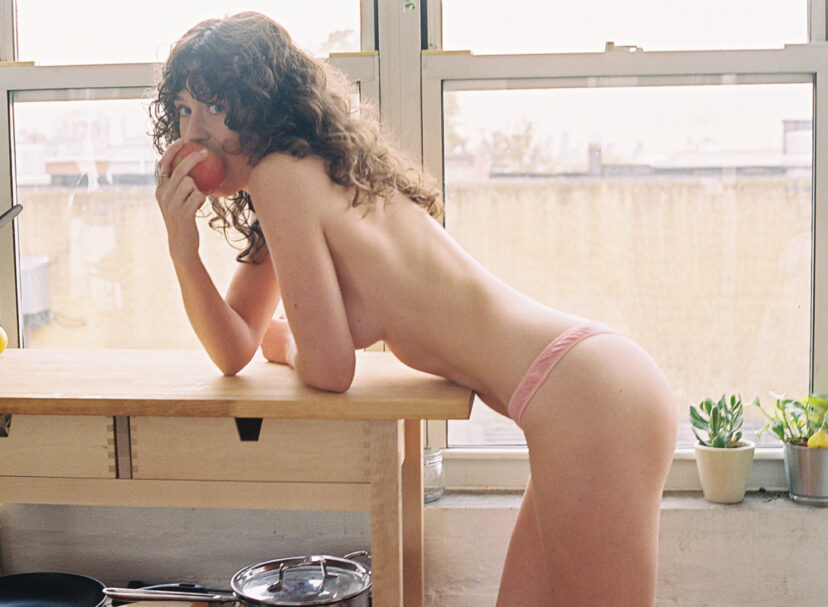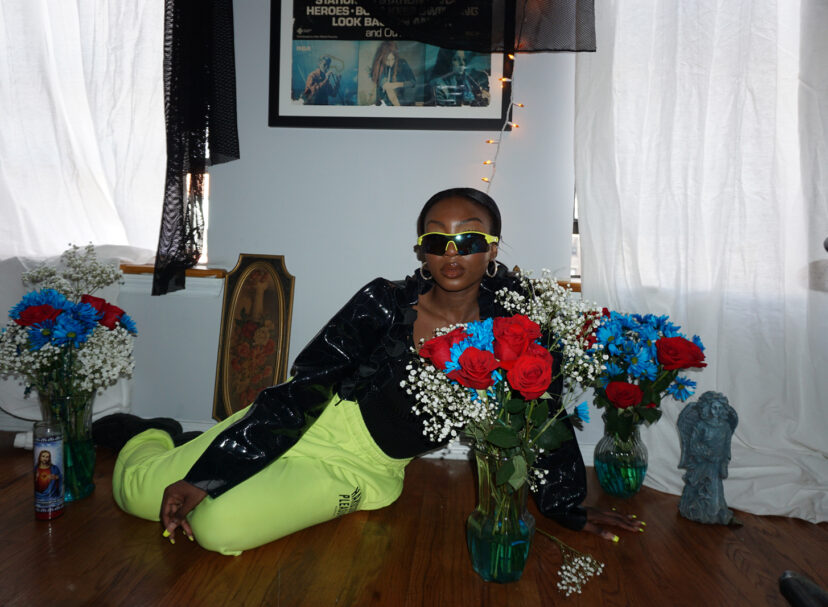Text and Interview: Alec Coiro
Photos: Kat Slootsky
I’m increasingly skeptical about of the fetishization of “brand identity.” I’ve become wary of those who profess to practice “brand consulting.” I worry that “branding” logic has begun to trickle down to you, the individual, as your personality becomes your online brand. I can only speculate as to what Mona Kowalska would think about this, but I will say that her approach to A Détacher provided me with a rare, welcome, and beautiful oasis of relief from my branding neurosis.
A Détacher means literally “to be detached,” as in detach the label, practical advice that is suggestive of a philosophy. I asked Kowalska about the name, and she said, “For me it was primarily about a description of what to do with the label. To think of what you’re buying as a thing not as a label. You should shop meaningfully and not buy things because of the label. I think you should buy things because they are what you effectively want to buy and believe in.” I asked if removing the label was a way of stripping the clothing of an aura, and she agreed that it was. But before things get too Walter Benjamin, I will point out that my clearest understanding of what it meant to “shop meaningfully” came not through our conversation, but when I saw the amazing pair of cable knit pants currently for sale. I wanted to have them in very meaningful way; they were gorgeous, completely unique, and invitingly comfortable.
Kowalska opened the original A Détacher shop on Mott street in 1998 when NoLita was still Little Italy, and there it stayed until the move to Mulberry Street last April. Opening the store in 1998 was the culmination of a slow settling into New York City that had been interrupted by a two year freelance job in Italy and then a one year stint in Paris managing the design studio for Sonja Rykiel. The small shop was perhaps a reaction to working at a larger brand like Sonia Rykiel. “I learned a lot, but at that moment I was not ready to be in any kind of corporate environment. I still wanted to be involved in design in a much more hands-on way.” This interest in staying focused on design has continued to run parallel with the scale of her business. “We stay small because I put all our money towards development. We’re not looking for a showroom, we don’t have a salesperson on staff. I put the money to what interests me, and I’m interested in design.”


I put the money to what interests me, and I’m interested in design.

A fashion show by nature is ultimately a commercial enterprise, but the A Detacher shows, more than most, seem to be conceived of as an exercise in design. Kowalska did a show in her 5th year in business, but afterwards decided she wasn’t ready for shows yet. “I didn’t do one for the next five years. And then in my 10th year I did a wedding dress, and so I had this extra money. It’s the only wedding dress we’ve ever done, and I decided we’re just going to take this money and put it towards a show, and we’ve been doing them ever since. For me it was a new challenge, a new way of thinking about clothes. It was a new engagement with what I was doing that I need, and I genuinely enjoy doing the shows; I like every aspect.”
When asked how the shift toward the schedule of putting together shows changed her process, she responded that “It didn’t change the process of making the clothes, but it almost completed it. Because now when I think about a collection, I think about how these things will go together. I think about it a little bit differently. I always sort of designed a wardrobe, but now it’s more so. And what you want these clothes to project beyond making the person happy. It’s a bigger picture.”
It’s an interesting and ambitious idea that a collection should project a bigger picture, and I wondered if for A Détacher there has been a continuity of the image the collection projects over the years. When confronted with such abstract questions, Kowalska rightfully responds that her answers are in her work; however, she does offer that for her, personally, “what I want clothes to project when I get dressed is strength. I think that varies from person to person–I just want to look strong. I don’t care if I look so thin, I don’t care if I look sexy. I don’t care if I look super brainy; I just want to look strong.”
Looking to the future, Kowalska is thinking about coolness. “Lately I do think about what makes something cool. I think that when we think of coolness, it’s a kind of masculine idea. And lately I’ve thought about that a lot: What makes women’s cool. I’m not obsessed with youth when I’m exploring that because I think that’s always where we take it: ‘There’s nothing cooler than youth; but I don’t give a fuck about youth really. But I’m often more inspired by men, and I hate that. I think there isn’t all this perfection and body image layered on it.”
This is certainly one of the least superficial examinations of what it means to be cool that I’ve heard, and we very much look forward to what these examinations yield.


What I want clothes to project when I get dressed is strength. I think that varies from person to person--I just want to look strong.






